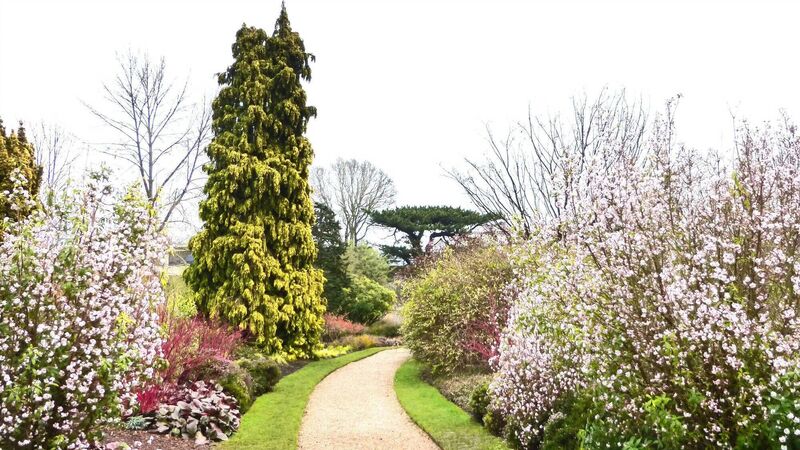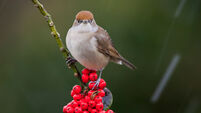How to create the winter garden of your dreams

Many gardeners dream of creating the perfect winter garden. Picture: Alamy/PA
The garden doesn’t have to be devoid of colour, scent or structure during the winter months — if you know what plants to add.
So says Jonathan Webster, RHS garden curator. “It’s a balance of evergreen structural plants, whether it’s shrubs or conifers,” he says.
Having an evergreen hedge acts as a beautiful backdrop to the garden, suggests the pro. “Coloured bark, vibrant red dogwoods and fragrance from plants such as Christmas box and Daphne bholua ‘Jacqueline Postill’, which flowers all the way through to spring, are key," adds Wesbter.
“A combination of all these layers creates something really special.”
When creating a border, consider your viewpoint. If in winter you are viewing your garden from a window, look at positioning your plants so the view is enhanced, he advises.

Consider the light and how the plants contrast with each other, and think about repetitive planting, which gives a sense of continuity. You might want to clip evergreens into balls and pillows dotted through the landscape, which will act as focal points in beds and can pull the rest of the winter bed together.
You can create further structure and interest using dwarf conifers, berried plants such as skimmia, as well as witch hazels, winter bedding and ornamental grasses.
To retain structure, consider not cutting back some of your perennial flowering plants, such as heleniums and grasses, which can provide structure and also seedheads for birds and sheltering insects.
Webster is curator of RHS Garden Rosemoor in Devon, which this year opened a new and expanded winter garden, designed by award-winning Jo Thompson. It features a mix of traditional and modern elements, including grasses, herbaceous plants and pruned trees. “We leave the grasses standing so you get that lovely textural feeling when they blow in the wind and later turn a lovely bronze colour. We cut them down in March, and they start sprouting again," says the curator.
“We’ve planted different varieties of Hydrangea paniculata, which will hold their flowers over winter, so that skeletal flowerhead will shine.”
Scent is all-important in the winter garden, says Webster.
“If you walk around a garden in winter, you don’t expect to encounter fragrance, really. Enjoy scent from plants like sarcococca, the Christmas box, whose flowers hide away under the plants, or Daphne bholua, which is flowering now all the way through to spring, and its flowers seem oblivious to winter weather.”

“We don’t tend to get as much frost as we used to, but conifers look great in the frost because there’s more for it to cling on to, laden with all that foliage," says Webster. "Dwarf pines, for instance, really do get highlighted.”
Grasses such as panicum and miscanthus also look lovely in the frost.

If your winter garden is limited to pots, you can still enjoy different-coloured foliage and evergreen structure, says Webster, whether it’s with shrubs like skimmia or winter bedding.
“Choose things which aren’t going to outgrow a pot quickly. You can use bellis, which produces fluffy pinky-white flowers, for winter bedding, or polyanthus.
“You could even use cut stems in pots, such as cut willows or cornus, to create a display, a framework in a pot.”

“For me, this is one of the best dogwoods with vibrant red stems,” says Webster.
It is easy to grow and tolerant of many soil types, but for the brightest winter stems, position it in full sun, planted among evergreen shrubs. Prune the stems back hard in March to promote a great display of stems in autumn and winter.
“If you have room for a small tree, this is my absolute favourite and it’s good all-year round because you get the lovely green foliage, stunning scarlet autumn colour and then the bark which is highlighted in winter.”

“We grow many different daphnes here, but that’s by far the hardiest, the best performer, which has survived all the really cold winters we’ve had here, while others have died. It’s pretty bomb-proof for a daphne.
“And the scent knocks your socks off from 100 yards. It is very sweet and perfumed. You smell it before you see it, and the scent travels in the breeze.”
It produces pinky-white flowers, becoming pinker as the flowers reach maturity.
These are fantastic ornamental grasses which look terrific in winter with their fluidity of movement.
The variety ‘Sea Mist’, is a blue, very light, airy type which grows to around 40-50cm tall. "There are others, including Panicum ‘Northwind’, which grows as a column, is very upright and over winter it stays as a bronze column. If you plant them through the garden, you have these pillars of grass, whereas others tend to turn down at the top," says Webster.

There are many hollies, some of which take up more space than others, but among Webster’s favourites is Ilex aquifolium ‘Pyramidalis’, which grows quite upright, producing red berries. “If you clip it to tidy it a bit it it does look like it’s been pruned and topiarised and is more like an upside-down cone the way it grows. It’s not overly rampant, where you get a nice shape, berries and rich evergreen foliage as well," he says.











